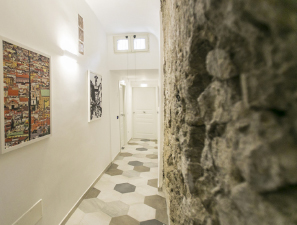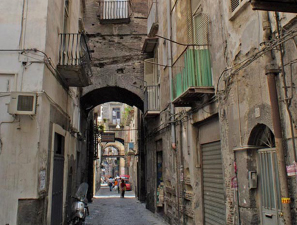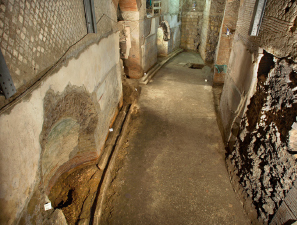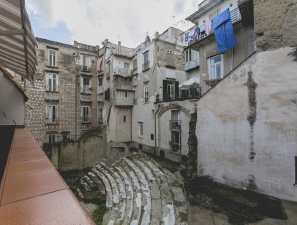ABOUT
Anticaglia24 is the new bed&breakfast nestled in the heart of
Naples. The rooms, all finely furnished, will make your stay unforgettable!
The structure is situated in an absolutely exclusive position: right in the Ancient Roman Theater of Neapolis, dating back to
the 1st century BC.
By staying in our rooms, you will be able to move around on foot and easily reach all the main sites of interest of the city: the
Duomo, the Museum of the Treasure of San Gennaro, Naples
Underground, the Chapel of San Severo and via San Gregorio
Armeno (the famous street for crib art).
Live Naples in all its colours and traditions; all the typical shops and restaurants are nearby. You can stroll through the
characteristic alleys of the city and taste the delicacies that Neapolitan cuisine offers: from the exclusive coffee with three
'C's to freshly baked sfogliatella, from the very fragrant
Genovese to the inevitable Margherita pizza dedicated to Queen Margherita of Savoy in 1889. |
|
 |
 |
 |
VIA ANTICAGLIA
Via dell’Anticaglia, in Naples, preserves the memory of what was the upper decumanus in the
Greco-Roman city.
It is useful to remember that the ancient cities, starting from the fifth century BC, at the suggestion
of the architect Ippodamo di Mileto, were built on a square plan with the streets crossing at 90
degrees angles. According to Roman usage, the roads that followed the east-west direction were
indicated with the name of "decumani", while those that went from north to south were called "cardini."
Via dell'Anticaglia represents precisely what in the Greek-Roman City was the upper decumanus.
But the conscious and curious visitor is struck by a peculiarity: the decumanus does not have a
straight course, but bends in a wide curvature. This strange trend is explained by the fact that in that
area there was the theater, famous because Nero performed in it. The houses that were built on the
traces of the ancient streets and ancient buildings retain the configuration of the theater, of which
some brick arches and a flight of steps remain on the surface, which gave the name to this street: via dell'Anticaglia, which means "street of ancient ruins". |
|
 |
 |
 |
THE ANCIENT THEATER
The ancient Roman theater, also called Teatro dell'Anticaglia, dates back to the 1st century BC.
Built in the typical semicircular shape of the Greek theater, it could accommodate between 5,000
and 6,000 spectators and it had three entrances: two side entrances for the actors and one used by
the spectators. The theater was built using the ‘opus mixtum’ technique in order to avoid any
collapses due to earthquakes: the reticulatum caused the seismic wave to disperse, while the
latericium blocked it.
In this theater, considered by Octavian Augustus one of the glories of Neapolis, the emperor
Claudius had several plays in honor of his beloved brother Germanicus. The first renovation took
place in the Flavian age, in the first century, and later in the second century. Fallen into oblivion in
the medieval period, between the fifteenth and seventeenth centuries it was gutted by Vico
Cinquesanti. Today, two arches in via Anticaglia testify to the presence of Nero's ancient stage.
These are structures used to reinforce the external part of the theater now perfectly incorporated into
the existing buildings. |
|
 |
 |
 |
|










